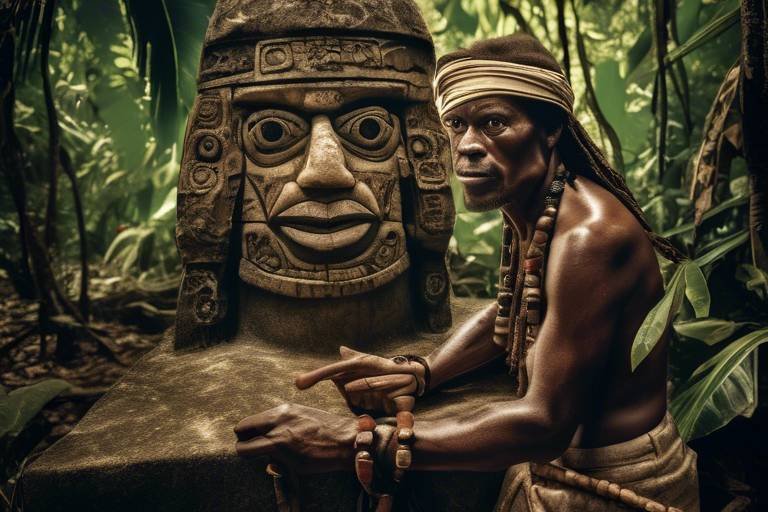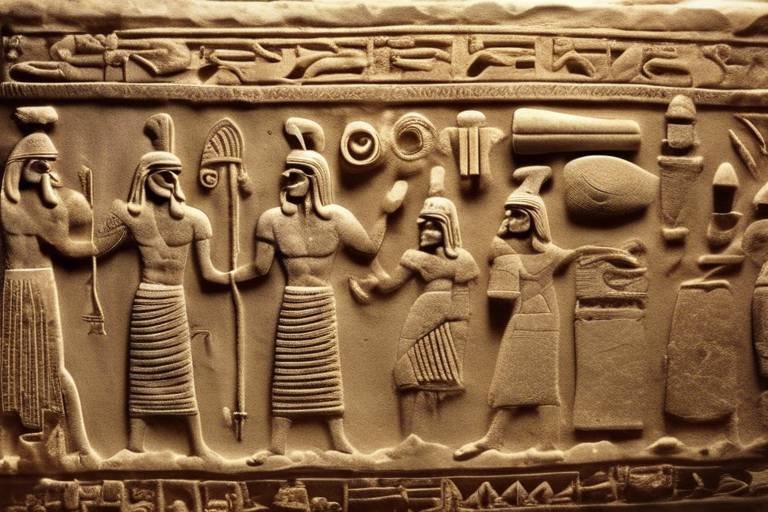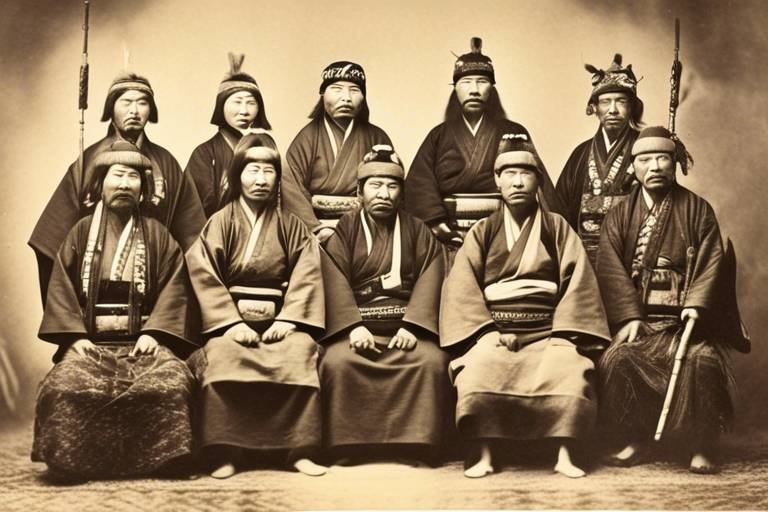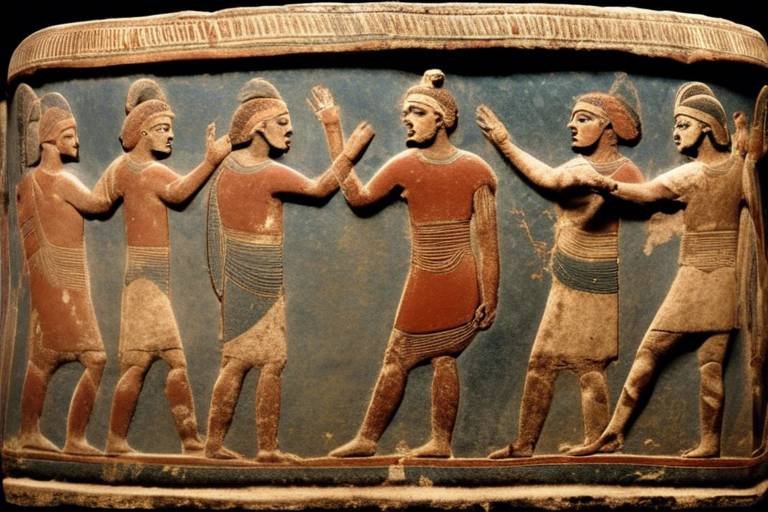The Mystery of the Sogdian Silk Road Traders
The Mystery of the Sogdian Silk Road Traders has captivated historians and archaeologists for centuries, offering a glimpse into the enigmatic world of ancient trade and cultural exchange. Who were these mysterious traders, and what secrets do they hold? Let's embark on a journey to unravel the mysteries surrounding the Sogdian Silk Road traders and explore the rich tapestry of their legacy.

Who Were the Sogdian Traders?
The Sogdian traders were a fascinating group of merchants and travelers who hailed from the ancient region of Sogdiana, located in present-day Uzbekistan and Tajikistan. These traders were renowned for their expertise in navigating the vast expanse of the Silk Road, a network of trade routes that connected the East and West during ancient times. The Sogdians played a crucial role in facilitating the exchange of goods, ideas, and culture between different civilizations along the Silk Road.

Trading Routes and Networks
When delving into the intricate world of the Sogdian Silk Road traders, one cannot overlook the vast and complex trading routes and networks that they traversed. These ancient merchants were the linchpins of a vast web of commerce that connected the East and the West, facilitating the exchange of goods, ideas, and cultures.
The Sogdian traders were renowned for their ability to navigate through challenging terrains, harsh climates, and diverse regions to transport precious commodities such as silk, spices, and precious metals. Their routes spanned from China to the Mediterranean, encompassing a network of trade hubs and oasis cities that served as crucial waypoints for their caravans.
One of the key trading routes that the Sogdian traders frequented was the fabled Silk Road, a network of interconnected pathways that linked the ancient civilizations of Asia, Europe, and Africa. This legendary route not only facilitated the exchange of goods but also fostered cultural exchanges, technological innovations, and the spread of ideas.
Moreover, the Sogdian traders were adept at forging alliances and establishing trade relationships with various ethnic groups and kingdoms along their routes. This enabled them to access a diverse range of products and commodities, further enriching the tapestry of goods that flowed through their trading networks.
Archaeological evidence reveals the presence of Sogdian outposts, settlements, and caravanserais along their trading routes, indicating the strategic locations they occupied to facilitate trade and ensure the safety of their journeys. These sites offer glimpses into the vibrant commercial activities and cultural exchanges that characterized the Sogdian trading networks.
In essence, the trading routes and networks of the Sogdian Silk Road traders were not just conduits for the exchange of goods but also conduits for the exchange of ideas, beliefs, and innovations that shaped the course of history and laid the foundation for global interconnectedness.
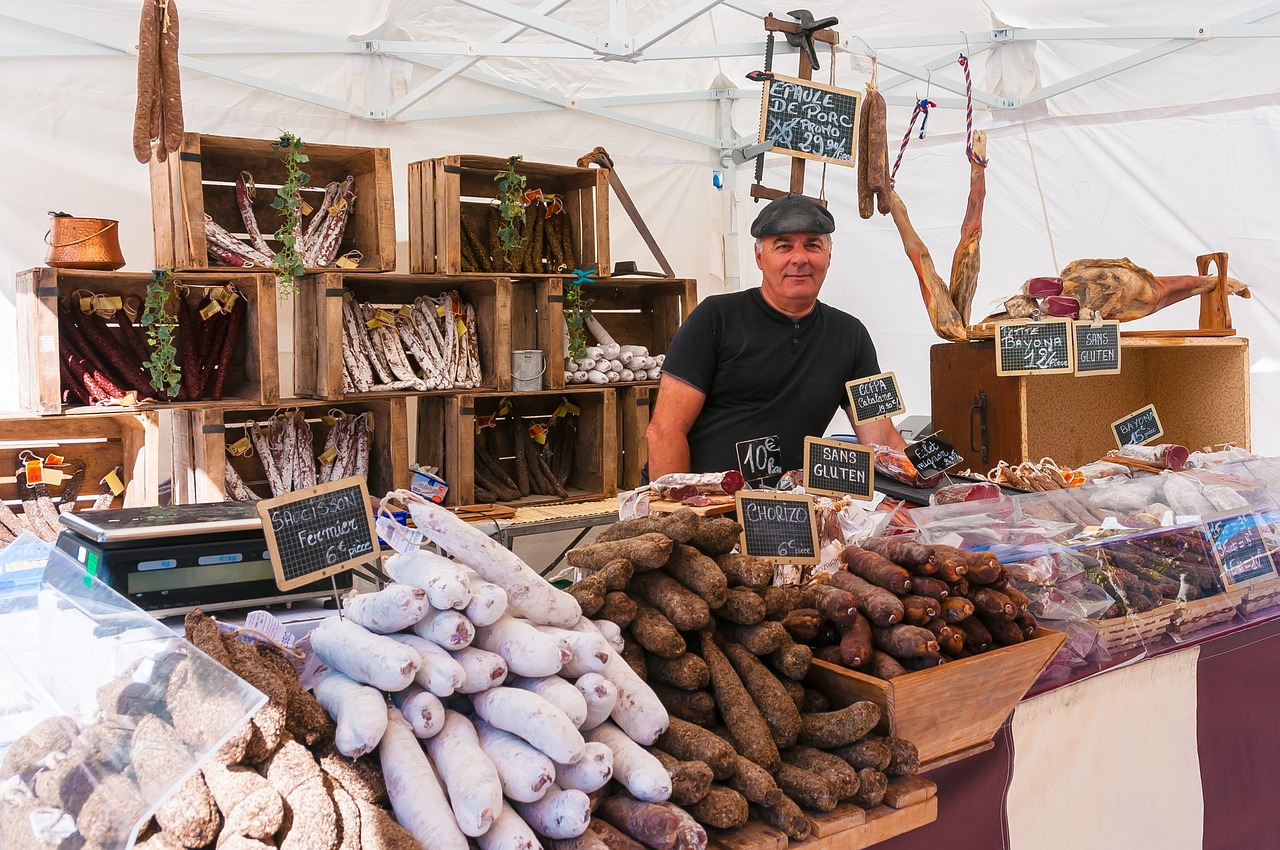
Artifacts and Archaeological Discoveries
Artifacts and archaeological discoveries provide a fascinating glimpse into the world of the Sogdian Silk Road traders, offering valuable insights into their daily lives and trading practices. Through the excavation of ancient sites along the Silk Road, researchers have unearthed a treasure trove of artifacts that speak to the rich cultural exchange and commercial activities of the Sogdian traders.
Among the most notable discoveries are intricately designed silk textiles, ceramics, and coins that showcase the craftsmanship and trade connections of the Sogdian people. These artifacts not only serve as tangible evidence of their thriving economy but also highlight the artistic talents and cultural influences that permeated their society.
Furthermore, the excavation of Sogdian settlements has revealed architectural remains such as residential structures, temples, and fortifications, shedding light on the urban planning and religious practices of these ancient traders. The layout of these settlements and the artifacts found within them provide valuable clues about the social organization and daily routines of the Sogdian people.
One particularly remarkable discovery is the Sogdian murals found in Panjakent, Tajikistan, which depict scenes of daily life, religious ceremonies, and mythical beings. These vibrant and detailed paintings offer a glimpse into the artistic expression and cultural beliefs of the Sogdian civilization, showcasing their sophisticated aesthetic sensibilities.
Through the careful study of these artifacts and archaeological sites, researchers continue to piece together the puzzle of the Sogdian Silk Road traders, unraveling the complexities of their trading networks and cultural interactions. Each discovery adds a new layer to our understanding of this enigmatic group of ancient merchants, highlighting the enduring legacy of the Sogdian people on the history of global trade and cultural exchange.

Language and Communication
Embark on a journey back in time to uncover the enigmatic world of the Sogdian Silk Road traders, who left a lasting legacy on global trade and cultural exchange.
The Sogdian traders were not only masters of commerce but also adept linguists, utilizing their language skills to navigate the diverse linguistic landscape of the Silk Road. They spoke Sogdian, a language belonging to the Eastern Iranian branch, which enabled them to communicate with various ethnic groups along the trade routes. Additionally, they were known to be proficient in other languages such as Chinese, Turkic, and even some forms of Greek, showcasing their adaptability and linguistic prowess.
Communication was vital for the success of their trading ventures, as it facilitated negotiations, agreements, and the exchange of goods and ideas. The ability to converse in multiple languages allowed the Sogdian traders to bridge cultural gaps and forge connections with merchants and travelers from different regions. This linguistic diversity not only facilitated trade but also fostered cultural exchange and mutual understanding among diverse communities.
Moreover, the Sogdians developed a system of communication beyond verbal language. They utilized a combination of written scripts, such as the Sogdian script and the Brahmi script, to record transactions, write letters, and maintain business records. These written communication methods played a crucial role in documenting their trading activities and preserving valuable information about the Silk Road network.
1. What role did religion play in the lives of the Sogdian traders?
2. How did the decline of the Sogdian traders impact the Silk Road trade network?
3. What are some of the most significant archaeological discoveries related to the Sogdian Silk Road traders?
4. How did the Sogdian traders contribute to the cultural exchange along the Silk Road?

Religious and Cultural Influences
The Sogdian Silk Road traders were not only merchants but also cultural ambassadors, carrying with them a rich tapestry of religious and cultural influences as they journeyed along the ancient trade routes. Their encounters with diverse civilizations along the Silk Road led to a fascinating exchange of ideas, beliefs, and practices, shaping the cultural landscape of the regions they traversed.
One of the most significant religious influences that the Sogdian traders encountered was the spread of Buddhism along the Silk Road. As they traveled through Buddhist regions, they not only traded goods but also absorbed and disseminated Buddhist teachings, contributing to the widespread adoption of the religion in Central Asia and beyond. The Buddhist art and artifacts found along the Silk Road bear testimony to the profound impact of this religious exchange.
Furthermore, the Sogdian traders were instrumental in the transmission of various cultural practices, such as the art of papermaking and the cultivation of fruits like peaches and apricots, which were introduced to new regions through their trade networks. Their interactions with civilizations of different faiths and traditions facilitated a cross-pollination of ideas and customs, enriching the cultural tapestry of the Silk Road.
Despite the dominance of Buddhism along certain stretches of the Silk Road, the Sogdian traders also encountered Zoroastrianism, Nestorian Christianity, Manichaeism, and other belief systems prevalent in the regions they traversed. This diverse religious landscape not only influenced the spiritual beliefs of the Sogdians themselves but also contributed to the syncretic nature of the cultures they encountered.
The cultural influences of the Sogdian Silk Road traders were not limited to religion but extended to art, architecture, language, and cuisine. Their interactions with civilizations as far as China and the Mediterranean led to a fusion of artistic styles, architectural motifs, linguistic borrowings, and culinary exchanges, creating a vibrant cultural mosaic that reflected the diversity and interconnectedness of the Silk Road civilizations.
In essence, the religious and cultural influences of the Sogdian Silk Road traders were profound and far-reaching, shaping the beliefs, practices, and artistic expressions of the civilizations they connected. Their legacy continues to resonate in the cultural heritage of the Silk Road regions, underscoring the enduring impact of their exchanges and interactions.

Decline of the Sogdian Traders
As the Silk Road entered a period of transformation and upheaval, the once-thriving Sogdian traders faced a gradual decline that marked the end of their prominent role in the ancient trade network. Various factors contributed to the decline of the Sogdian traders, leading to the fading of their once-flourishing trading network.
One significant factor in the decline of the Sogdian traders was the shift in global trade routes and the emergence of new players in the trading landscape. As political and economic dynamics evolved, the traditional routes traversed by the Sogdians became less favorable, diminishing their competitive edge in the market.
Additionally, the rise of rival trading powers and the expansion of empires posed challenges to the Sogdian traders, making it increasingly difficult for them to maintain their dominance in the trade network. The changing geopolitical landscape and the emergence of new trade hubs further marginalized the once-influential Sogdian merchants.
Furthermore, internal challenges within the Sogdian society, such as social unrest, economic instability, and cultural shifts, also played a role in the decline of the traders. These internal factors weakened the cohesion and resilience of the Sogdian trading community, making it harder for them to adapt to the changing external environment.
Despite their decline, the legacy of the Sogdian traders continued to resonate through the centuries, leaving a lasting imprint on the history of global trade and cultural exchange. While their trading network may have faded, the impact of their interactions and influence along the Silk Road endured, shaping the course of history in ways that are still felt today.

Legacy of the Sogdian Silk Road Traders
The legacy of the Sogdian Silk Road traders is a tapestry woven with threads of innovation, cultural exchange, and economic prosperity. These ancient merchants, hailing from the region of Sogdiana in Central Asia, left an indelible mark on the history of global trade. Their legacy extends far beyond the physical goods they traded, encompassing a rich tapestry of cultural influences that continue to resonate in the modern world.
One of the most enduring legacies of the Sogdian traders is their role as cultural intermediaries along the Silk Road. As they traversed vast distances, they not only traded goods but also exchanged ideas, languages, and beliefs. This cultural exchange facilitated the spread of knowledge and innovation, laying the foundation for the interconnected world we live in today.
Moreover, the Sogdian traders were pioneers in the realm of international trade, setting the stage for the complex networks of commerce that would shape the future of global economics. Their expertise in navigating diverse landscapes and negotiating with various cultures established them as trailblazers in the world of trade.
The artifacts left behind by the Sogdian traders serve as tangible reminders of their legacy. From intricate textiles to exquisite pottery, these remnants offer a glimpse into the daily lives and trading practices of these ancient merchants. Each artifact tells a story of resilience, adaptability, and ingenuity, showcasing the craftsmanship and sophistication of the Sogdian traders.
Furthermore, the legacy of the Sogdian Silk Road traders is reflected in the enduring impact they had on the regions they traversed. The cultural influences they brought with them, from religious beliefs to artistic techniques, left an indelible mark on the societies they encountered. Their legacy lives on in the art, architecture, and traditions of various cultures along the Silk Road.
In conclusion, the legacy of the Sogdian Silk Road traders is a testament to the power of cross-cultural exchange, innovation, and resilience. Their contributions to global trade and cultural diffusion continue to shape our world today, underscoring the importance of understanding and preserving the legacy of these enigmatic merchants.

Modern-Day Connections
In the modern world, the legacy of the ancient Sogdian Silk Road traders continues to resonate in various aspects of global trade and cultural exchange. While the physical routes they once traversed may have evolved and transformed over time, the core principles of connectivity, commerce, and cross-cultural interaction remain prevalent.
One of the most striking parallels between the Sogdian traders of antiquity and modern-day trade routes is the emphasis on forging connections across vast distances. Just as the Sogdians utilized a network of routes to transport goods and ideas, today's trade networks span continents, linking economies and societies in a complex web of exchange.
Moreover, the spirit of innovation and adaptation displayed by the Sogdian traders finds resonance in contemporary trade practices. In a rapidly evolving global economy, the ability to pivot, diversify, and embrace new technologies mirrors the entrepreneurial mindset that characterized the Sogdians' approach to trade.
Furthermore, the cultural exchanges facilitated by the Sogdian traders along the Silk Road find echoes in the multicultural landscapes of modern cities and marketplaces. The fusion of traditions, cuisines, and languages that defined the Silk Road experience is mirrored in the vibrant tapestry of diversity seen in today's interconnected world.
As technology continues to shrink the distances between nations and cultures, the enduring legacy of the Sogdian Silk Road traders serves as a reminder of the transformative power of trade and exchange. By drawing inspiration from the past, we can navigate the complexities of the present and forge new connections that transcend borders and boundaries.

Unsolved Mysteries and Future Research
The legacy of the Sogdian Silk Road traders is shrouded in mystery, with many unanswered questions still lingering to this day. One of the most intriguing mysteries is the exact extent of their trading network and the routes they traveled. Despite numerous archaeological discoveries, there are gaps in our understanding of specific trade routes and the connections between different regions.
Another enigma surrounds the daily life of the Sogdian traders. While artifacts have provided valuable insights into their material culture, aspects of their social structure, governance, and day-to-day activities remain elusive. Unraveling these mysteries could offer a more comprehensive picture of how the Sogdians operated along the Silk Road.
Future research holds the promise of shedding light on the linguistic diversity of the Sogdian traders. Their proficiency in multiple languages was crucial for communication and negotiation during trade. By delving deeper into their language skills and the methods they used to overcome linguistic barriers, researchers may uncover new facets of their interactions with diverse cultures.
One of the most pressing questions is the role of the Sogdian traders in the transmission of ideas and technologies along the Silk Road. While it is known that they played a significant role in cultural exchange, the specifics of how they influenced the spread of religions, philosophies, and artistic styles remain uncertain. Exploring these influences could provide valuable insights into the interconnected nature of ancient civilizations.
As modern technology and research methods continue to advance, there is hope that new discoveries will illuminate the mysteries surrounding the Sogdian Silk Road traders. By combining archaeological findings with linguistic analysis, genetic studies, and interdisciplinary collaboration, scholars aim to paint a more detailed portrait of this enigmatic group and their enduring impact on global history.
Frequently Asked Questions
- What is the significance of the Sogdian Silk Road traders?
The Sogdian Silk Road traders were pivotal figures in the ancient trade network, facilitating the exchange of goods, ideas, and culture between East and West. Their legacy continues to influence global trade and history.
- How did the Sogdian traders communicate along the Silk Road?
The Sogdian traders utilized a variety of languages and communication methods, including their native Sogdian language, as well as other languages such as Chinese and Persian. They played a crucial role in bridging cultural divides through their linguistic skills.
- What led to the decline of the Sogdian Silk Road traders?
Several factors contributed to the decline of the Sogdian traders, including the shift of trade routes, political instability, and the rise of competing powers. These challenges eventually led to the fading of their once-thriving trading network.
- What can we learn from the artifacts of the Sogdian traders?
The artifacts and archaeological discoveries associated with the Sogdian Silk Road traders offer valuable insights into their daily lives, trading practices, and interactions with other cultures. They provide a window into the past and help us understand the complexities of ancient trade networks.
- Are there any modern-day connections to the Sogdian Silk Road traders?
Absolutely! The trading practices and cultural exchanges facilitated by the Sogdian traders have left a lasting impact on modern trade routes and global interconnectedness. Their legacy can be seen in the continued flow of goods and ideas along contemporary trade networks.







